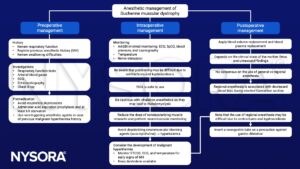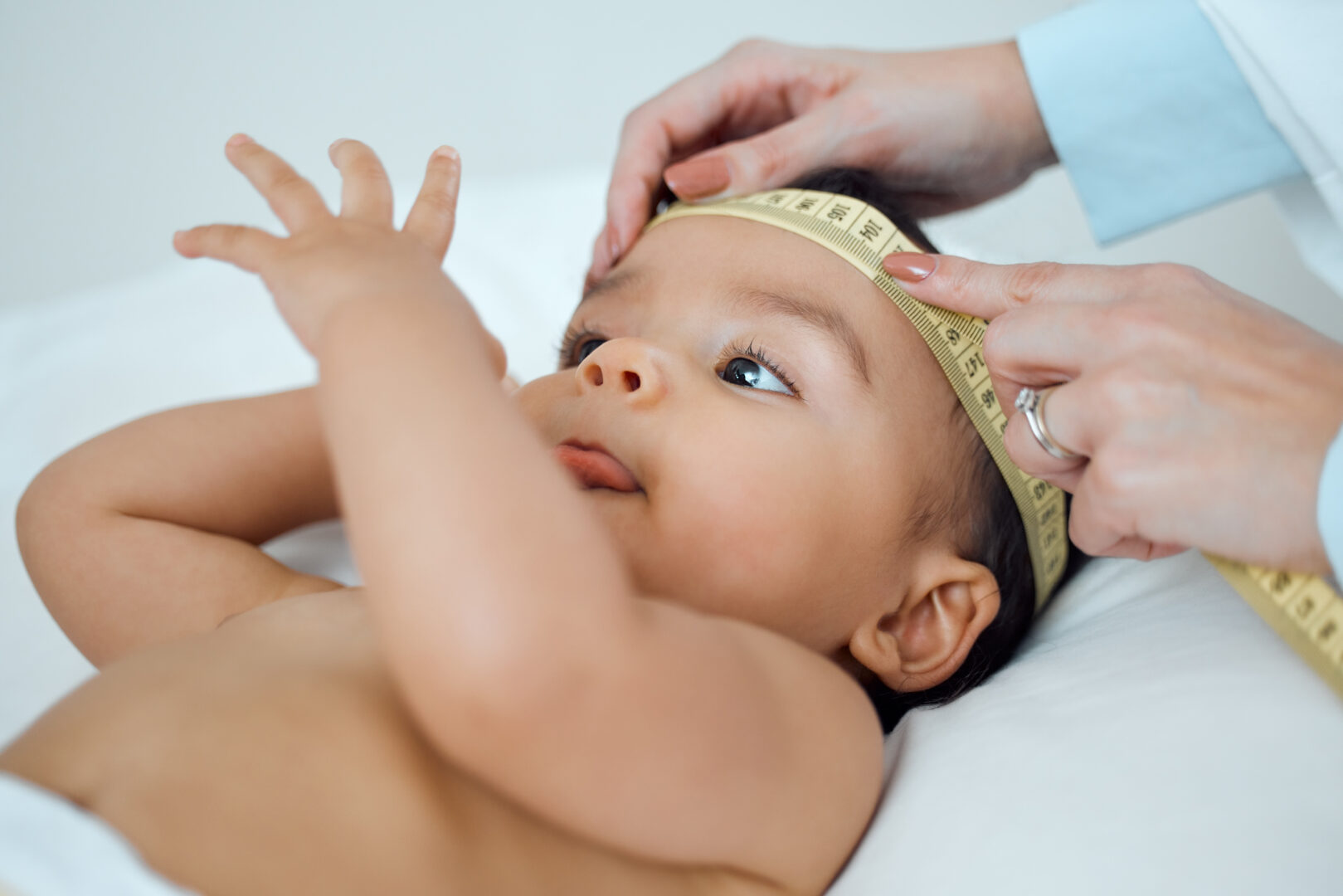Learning objectives
- Signs and symptoms of Duchenne muscular dystrophy
- Anesthetic management of Duchenne muscular dystrophy
Definition and mechanisms
- Duchenne is an x-linked genetic disorder characterized by progressive muscle weakness and atrophy
- It is a multi-systemic condition and affects striated, smooth, and cardiac muscles
- Duchenne muscular dystrophy is the most common and severe form of muscular dystrophies, a group of genetically determined primary degenerative myopathies
- Duchenne is caused by a mutation in the gene that encodes for dystrophin, a protein that is essential to the proper functioning of our muscles
- Without dystrophin, muscles are not able to function or repair themselves properly
- Duchenne symptom onset is in early childhood (around the age of 4 years) and affects primarily males
- The prevalence is approximately 6 per 100,000 individuals
- Affected males are often wheelchair-bound before their teens and suffer from contractures, marked scoliosis, restrictive lung function, and cardiomyopathies
- The disease progresses differently for every person and the average life expectancy is 26-30 years
- Duchenne becomes eventually fatal due to respiratory or cardiac failure in the second or third decade
Signs and symptoms
- Muscle weakness
- Developmental delay
- Delayed speech and language development
- Enlargement of the calves
- Fatigue
- Difficulty climbing stairs
- Toe walking
- Frequent falls
- Lumbard lordosis
- Cardiomyopathy
- Shortness of breath
- Cognitive impairement
- Particular ECG pattern: Q-waves in the lateral leads, increased ST-segments, poor R-wave progression, resting tachycardia, and conduction defects
- Respiratory failure
Treatment
- No cure available
- Manage symptoms with supportive therapy:
- Corticosteroids
- ACE inhibitors and/or beta-blockers to slow the progression of cardiomyopathy
- Physical therapy
- Braces
- Surgery to treat scoliosis and contractures
- Exercise
- Tracheostomy and assisted ventilation for respiratory failure
- Anticonvulsants to control seizures
- Immunosuppressants to delay muscle damage
Management

Suggested reading
- Duan, D., Goemans, N., Takeda, S. et al. Duchenne muscular dystrophy. Nat Rev Dis Primers 7, 13 (2021).
- Pollard BJ, Kitchen, G. Handbook of Clinical Anaesthesia. Fourth Edition. CRC Press. 2018. 978-1-4987-6289-2.
- Marsh, S., Pittard, A., 2011. Neuromuscular disorders and anaesthesia. Part 2: specific neuromuscular disorders. Continuing Education in Anaesthesia Critical Care & Pain 11, 119–123.
- Lerman, J., 2011. Perioperative management of the paediatric patient with coexisting neuromuscular disease. British Journal of Anaesthesia 107, i79–i89.
- Ragoonanan, V., Russell, W., 2010. Anaesthesia for children with neuromuscular disease. Continuing Education in Anaesthesia Critical Care & Pain 10, 143–147.
We would love to hear from you. If you should detect any errors, email us customerservice@nysora.com







